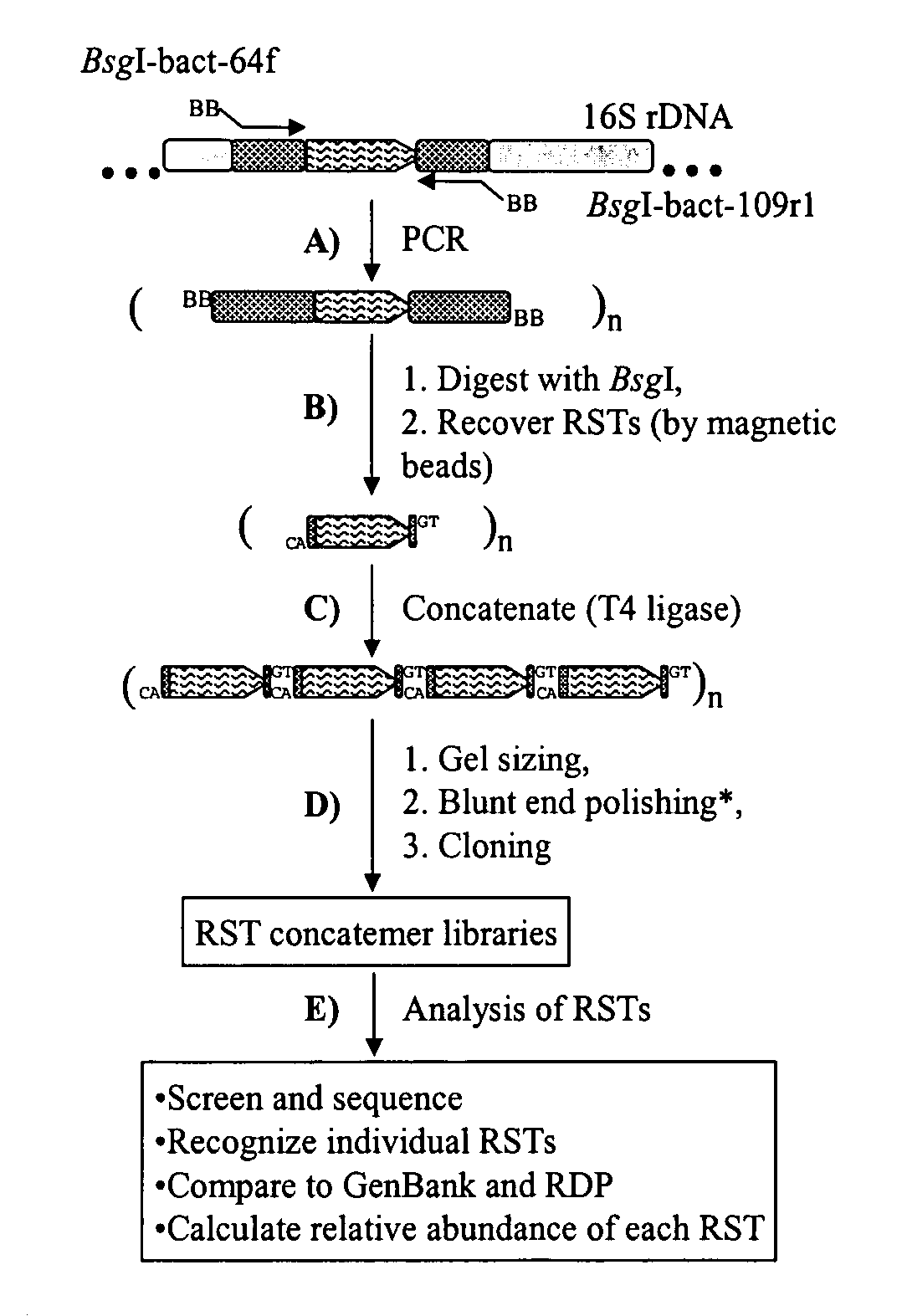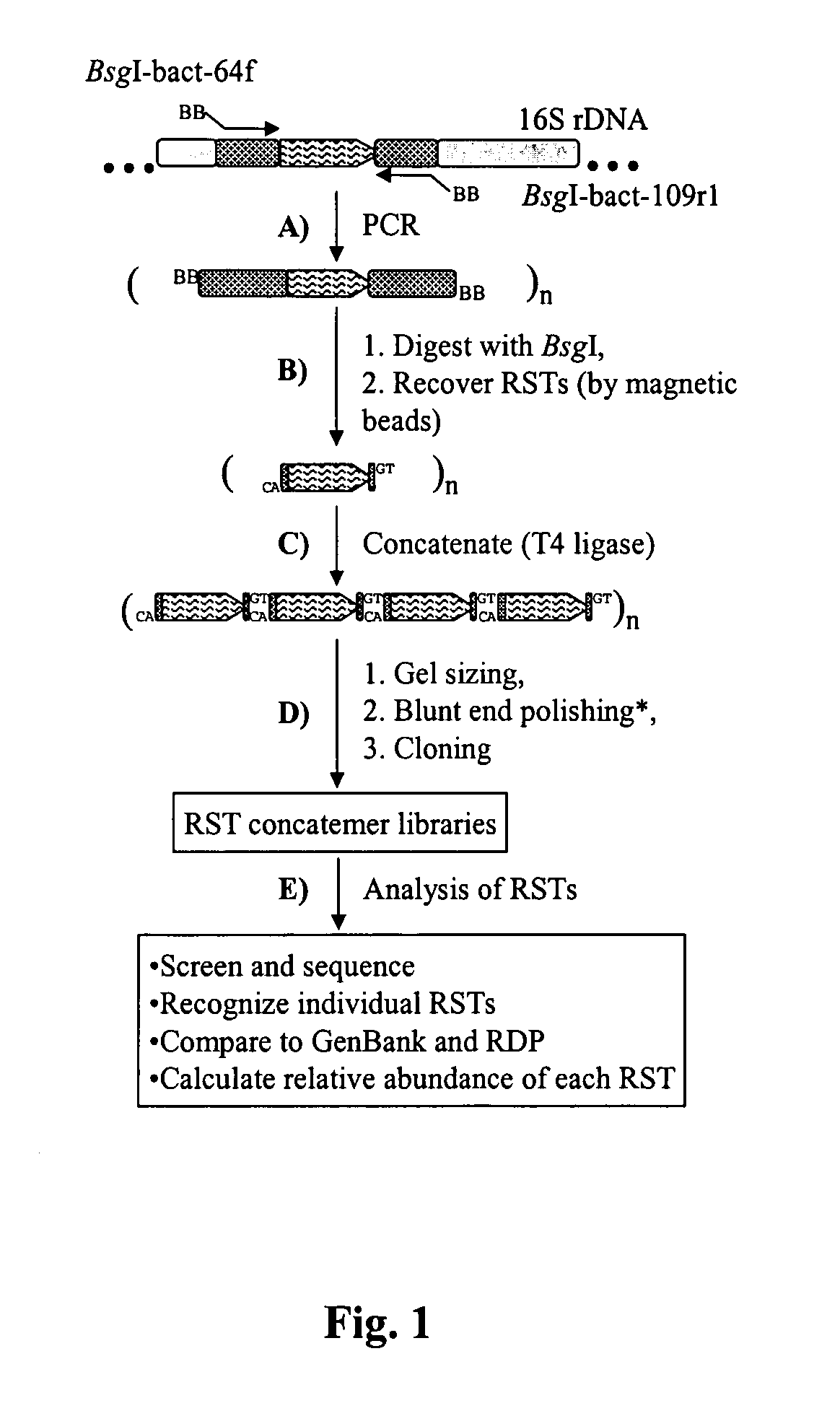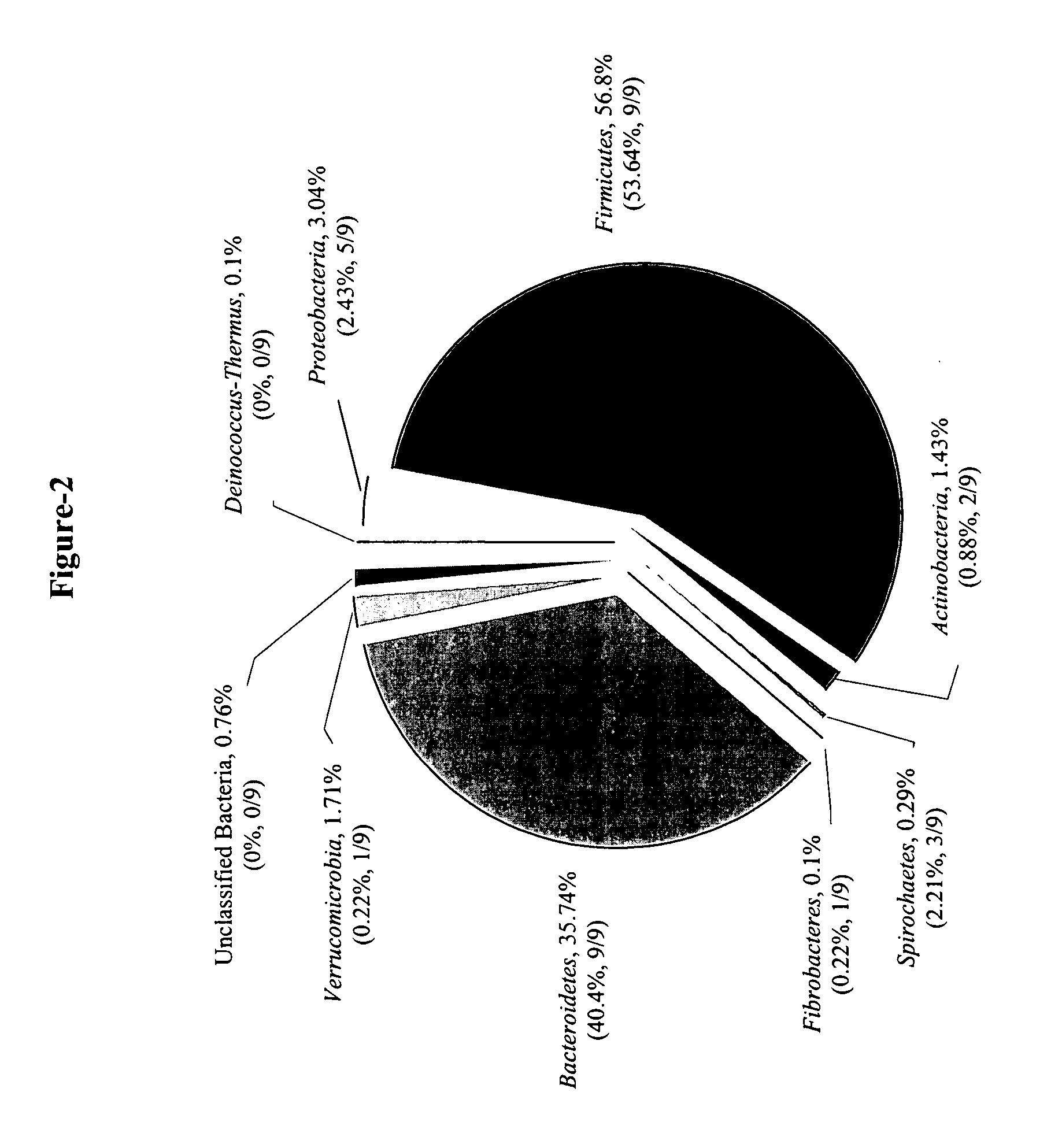Serial analysis of ribosomal and other microbial sequence tags
a ribosomal and other microbial technology, applied in the field of serial analysis of ribosomal and other microbial sequence tags, can solve the problems of insufficient cost-effective or efficient approach to afford comprehensive examination, significant limitation of the feasibility of such comprehensive characterization, and inability to achieve large-scale sequencing for most microbial ecological studies
- Summary
- Abstract
- Description
- Claims
- Application Information
AI Technical Summary
Benefits of technology
Problems solved by technology
Method used
Image
Examples
example 1
Serial Analysis of Ribosomal Sequence Tags in a Complex Microbial Community
[0039] DNA sample preparation. The microbial community genomic DNA was used in a previous study, which examined the prokaryotic diversity in different fractions of sheep rumen content. The DNA was sampled from the adhering fraction of a rumen digesta sample (Ad-H2) collected from a sheep fed a hay diet using the RBB+C method.
[0040] PCR amplification of the V1 region. According to the methods used herein, PCR primers were designed to target the V1 region of 16S rrs genes, which is the most variable region among the nine (V1-V9) hypervariable regions. The average length of the RST region derived from the V1 is 44.8 bp (ranging from 26 to 163 bp) among the 218 phylogenetic representative rrs genes in RDP. Theoretically, such a length can encode 3.66×1024 (444.8-4) different RSTs, which are sufficient to accommodate all bacterial species in any ecosystem. However, based on an in silico analysis, RSTs provide so...
PUM
| Property | Measurement | Unit |
|---|---|---|
| Antimicrobial properties | aaaaa | aaaaa |
| Antimicrobial resistance | aaaaa | aaaaa |
Abstract
Description
Claims
Application Information
 Login to View More
Login to View More - R&D
- Intellectual Property
- Life Sciences
- Materials
- Tech Scout
- Unparalleled Data Quality
- Higher Quality Content
- 60% Fewer Hallucinations
Browse by: Latest US Patents, China's latest patents, Technical Efficacy Thesaurus, Application Domain, Technology Topic, Popular Technical Reports.
© 2025 PatSnap. All rights reserved.Legal|Privacy policy|Modern Slavery Act Transparency Statement|Sitemap|About US| Contact US: help@patsnap.com



